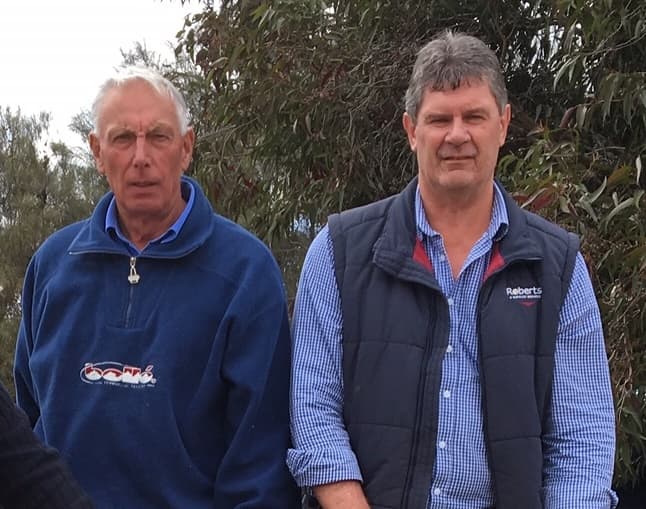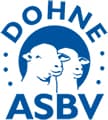Dohne = Lambs on the Ground
Original article by Nicola Wood March 2019. Original photo courtesy of Landmark agent Stephen Chalmers.
NOEL CLEAR
BRACKNELL, TASMANIA
“The terminal advantages of the ewe are the higher lambing percentages. Young ewes get in lamb a lot better than the straight Merinos do, which I believe is to do with body weight, because they’re faster growing and more vigorous therefore maintaining condition.”
NOEL CLEAR is on track to build his Dohne flock on his property in Bracknell, Tasmania. The traditionally high rainfall region, has presented some breeding challenges in the past with his original flock of Merinos. Mr Clear’s property ‘Gaters’, 1,400 acres 33km southwest of Launceston, Tasmania is a mixed farming operation running Angus cattle, Merino and now Dohne sheep.
After only being in Dohnes for 4 years, Mr Clear is seeing major improvements in his commercial breeding program, with the introduction of the breed proving that it can withstand the wet Tasmanian climate and remain maternally productive.
“We’re crossing the Dohnes over the Merino to get better constitution. We have about 850 ewes we join each year and what started us off was having trouble each winter, we’re in an 800ml rainfall area, so fairly wet for Merinos,” Mr Clear said.
Looking to improve lambing across the board, Mr Clear found the Dohnes to provide the maternal characteristics they needed to achieve lambing productivity, whilst still maintaining a good standard in wool cut and quality. “The wool side of things wasn’t paying very well so we’d been thinking about changing for a few years. We thought about Corriedales and other crosses but in the end we settled on the Dohnes.” Benefits from introducing the Dohnes in particular were seen in increased carcass weight and condition score, in addition to an overall improvement in constitution. “With this we saw the lambs go through the winter far better, where in previous years they struggled,” Mr Clear said.
Mr Clear is particularly impressed by the Dohne’s fertility and claims they rear more lambs than the Merinos. “The terminal advantages of the ewe are the higher lambing percentages. Young ewes get in lamb a lot better than the straight Merinos do, which I believe is to do with body weight, because they’re faster growing and more vigorous therefore maintaining condition. They also appear to be pretty good mothers as well.”
812 ewes were joined in 2018 producing 767 lambs with a greater percentage of the flock being Dohne. The hoggets and young ewes are Dohne/Merino cross and Mr Clear sees this increase happening annually.“We’re going to continue to monitor our progress with the breed and have changed what’s traditionally done with these Dohne fat lambs. For instance, the majority of the lambs will now be sold prior to winter whereas previously we’d be selling a lot later. The positive is that it changes what we can carry through the winter and then the near future – so if we can turn more lambs off quicker then maybe we can look to run more ewes,” he said.

Noel Clear with Roberts Ltd, Tasmanian agent Andrew Murfet.










 Facebook
Facebook YouTube
YouTube Instagram
Instagram